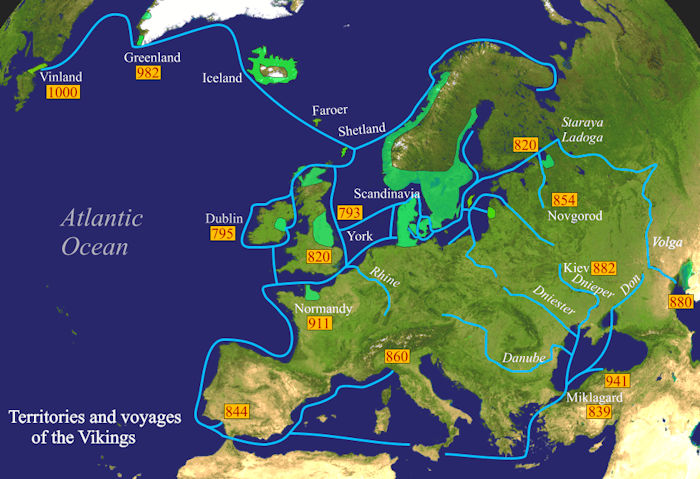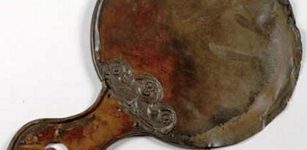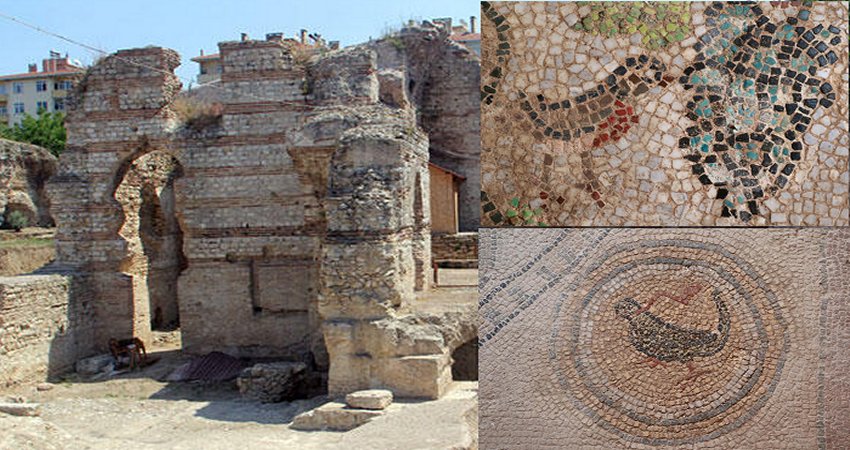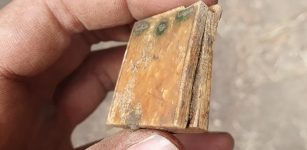“According to him, the recent Viking Age find is exciting because the earliest finds in this quarter made so far dated back to the comb ceramic period, approximately the 4th millennium BC, and the traces of settlement traces stretch from that period until the beginning of our era. That is followed by a wide gap and the next findings in this quarter date to the Middle Ages,” Postimees Estonia reports.
Unique Viking Age Hearths Discovered In Tallinn, Estonia
Conny Waters – MessageToEagle.com – An interesting archaeological discovery shedding light on Viking presence in Estonia has been reported by archaeologists excavating in the country’s capital Tallinn.
Archeologists working for the private company Arheox have announced they have unearthed several hearths and other objects that will help fill a gap in the history of Tallinn. Focus has been on finishing the excavations in the vicinity of 37 Pärnu Road where scientists have found Viking-era antiquities that have been never before discovered in Tallinn.
Archaeologists found four Viking-era hearths in the center of Tallinn. Credit: Mihkel Maripuu
“This year we have been digging up deposits next to the former Kalev sports building which dated back to the 3rd millennium BC and now found remains from the Viking Age belonging to the second half of the 1st millennium.
We have found the site of a house dating back from the early metal age, about 500 BC, until the birth of Christ, with an intense cultural layer rich in humus, surrounded by stone-lined post holes. It was obvious that there had been some upright posts. We have found fireplaces, pits, and pottery of the period. To get it all we screen through the whole cultural layer,” archaeologist Rivo Bernotas said.
Bernotas explained he and his team are currently excavating a very diverse site that contains traces of settlement from the Stone Age to the Middle Ages.
“This year we have been digging up deposits next to the former Kalev sports building which dated back to the 3rd millennium BC and now found remains from the Viking Age belonging to the second half of the 1st millennium. We have found the site of a house dating back from the early metal age, about 500 BC, until the birth of Christ, with an intense cultural layer rich in humus, surrounded by stone-lined post holes. It was obvious that there had been some upright posts. We have found fireplaces, pits and pottery of the period. To get it all we screen through the whole cultural layer,” Bernotas said.
Credit: Bogdangiusca – CC BY-SA 3.0
“But now we have discovered the Viking Age hearths, quite unique in the context of Tallinn, which helps to tighten up this sparse timeline. The initial dating is roughly the second half of the first millennium. Different experts have viewed and dated the ceramics found here into the period between 700 and 1050 AD. We have also found some charcoal from the fireplaces we dug up, and once we send this coal to the laboratory for more accurate analysis, we could date them with the precision of a hundred or a few hundred years, Bernotas said.
Aerial photo of Iru fort in Northern Estonia, 1924. The fort was used during the Viking Age. Credit: Public Domain
Archaeologist Keiti Randoja who also examined the site suggests “the absence of findings in the meantime could be explained by the fact that the inhabitants of the area moved elsewhere due to inconvenient natural conditions, climate or the relocation of settlement. “The initial dating based on ceramics is, of course, relatively vague. It could also be the pre-Viking age but coal dating will certainly specify it,” said Randoja.
The four hearths found so far are surprisingly close to each other and archaeologists have found both coarse and fine ceramics. The stones in the soil have probably been in the fire and heated because they are fragile and crumbling. Individual animal bones were also found in the fireplaces.”
By comparing the new artifacts with previously discovered ancient objects unearthed during earlier excavations it is possible to learn how people in the past were spending time at this place.
“We could clearly see the bottom of a building between the Kalev sports building and the Das Haus complex. This raises the question of what the people did here at that time. We have fireplaces, but no signs of any buildings. Perhaps this was a temporary camp site. Or if there was a part of a broader settlement complex here, it might have been a short-time rest stop,” Bernotas said.
See also: More Archaeology News
During previous excavations, the archaeologists found a funeral site dating back to 500 to 600 BC, where the discovered jewelry was characteristic of early Volga-Oka Finno-Ugrians. “The ritual nature of this funeral and the absence of traces of intensive activities have led the archaeologists to the idea that it might have been a cult place. Next to the funeral there was a fire with a broken pot. So maybe a sort of funeral wake was held here 2500 years ago,” the archaeologist said.
Individual finds dating back to the Viking Age have been discovered earlier, but such sites as the newly found fireplaces have not been found before in Tallinn.
Written by Conny Waters – MessageToEagle.com – AncientPages.com Staff Writer













